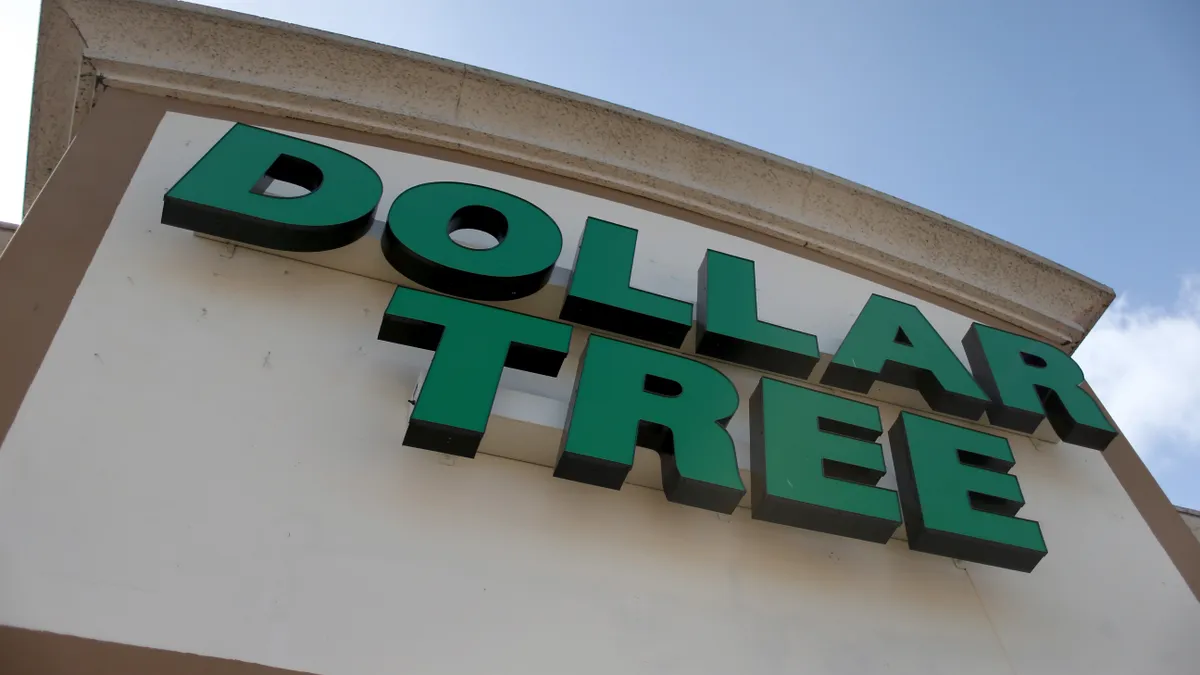Dive Brief:
- Dollar Tree's sales increased 3.9% year over year to $6.4 billion in the third quarter. Comparable sales were up 2.7% in the retailer's Family Dollar business and 0.6% at its namesake banner.
- CEO Michael Witynski said the retailer had a strong finish to the quarter "as shoppers are increasingly focused on value in this inflationary environment." At the same time, cost pressures led to a drop in operating income of more than 33%.
- While customers sought out value at Dollar Tree, the discounter is raising its own prices, as it plans to trade out its 35-year-old $1 price promise for a $1.25 price point across a majority of its assortment.
Dive Insight:
Dollar Tree signaled earlier in the fall that it was testing new price points at its legacy stores along with expanding its Dollar Tree Plus concept, which offers products at $1, $3 and $5 price.
The $1.25 price at the company's flagship stores marks a historic shift, and it comes at a time when the retailer is feeling the squeeze of skyrocketing freight and supply chain costs.
"For 35 years, Dollar Tree has managed through inflationary periods to maintain the everything-for-one-dollar philosophy that distinguished Dollar Tree and made it one of the most successful retail concepts for three decades," Dollar Tree said in its earnings release. "However, as detailed in its September announcement, the Company believes this is the appropriate time to shift away from the constraints of the $1.00 price point in order to continue offering extreme value to customers."
This year has thrown into sharp relief the difficulties of sticking to the $1 price point through thick and thin. In August, Dollar Tree said it could have to pay up to $200 million in added freight costs for the year amid shipping snarls across the globe and other supply chain bottlenecks. Holding to the $1 price point means that extra money has to come out of Dollar Tree's margins.
Yet, the company specifically stated that wasn't the reason for the pivot to $1.25. "This decision is permanent and is not a reaction to short-term or transitory market conditions," it said.
Dollar Tree noted that the new $1.25 price point would allow the retailer to "materially expand its offerings, introduce new products and sizes, and provide families with more of their daily essentials," as well as reintroduce customer favorites previously dropped. The price hike also returns Dollar Tree to its historical gross margins.
As for Q3, GlobalData Managing Director Neil Saunders noted in email comments that Dollar Tree's overall comparable sales growth fell short of general inflation levels and growth in the markets for consumables and general merchandise — a sign that Family Dollar and Dollar Tree are losing market share.
Saunders attributed this in part to lack of "a solid consumables and food offer" at the more discretionary Dollar Tree banner, and an offer at Family Dollar that fell short of discount grocers and peer Dollar General.
Saunders also noted the pressures on profits from cost inflation. The new $1.25 price point, Saunders said, is "inevitable" but above inflation rates, and it risks "reduced customer traction, smaller basket sizes, and some erosion of the value credentials Dollar Tree is renowned for."
Despite some pressures, Telsey Advisory Group analysts led by Joe Feldman said in an emailed research note that "Dollar Tree is well-positioned to gain market share, given its convenient locations and value-focused merchandise."













